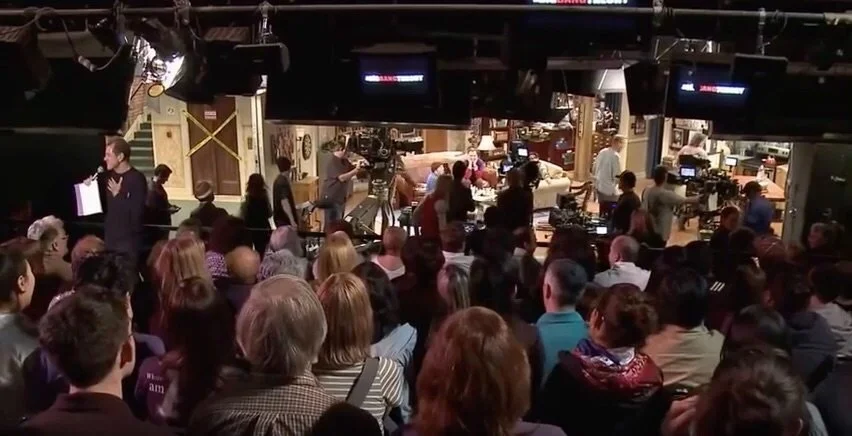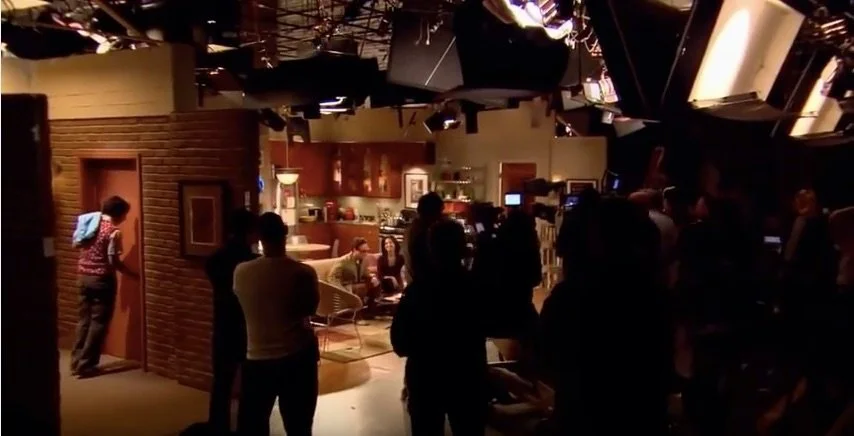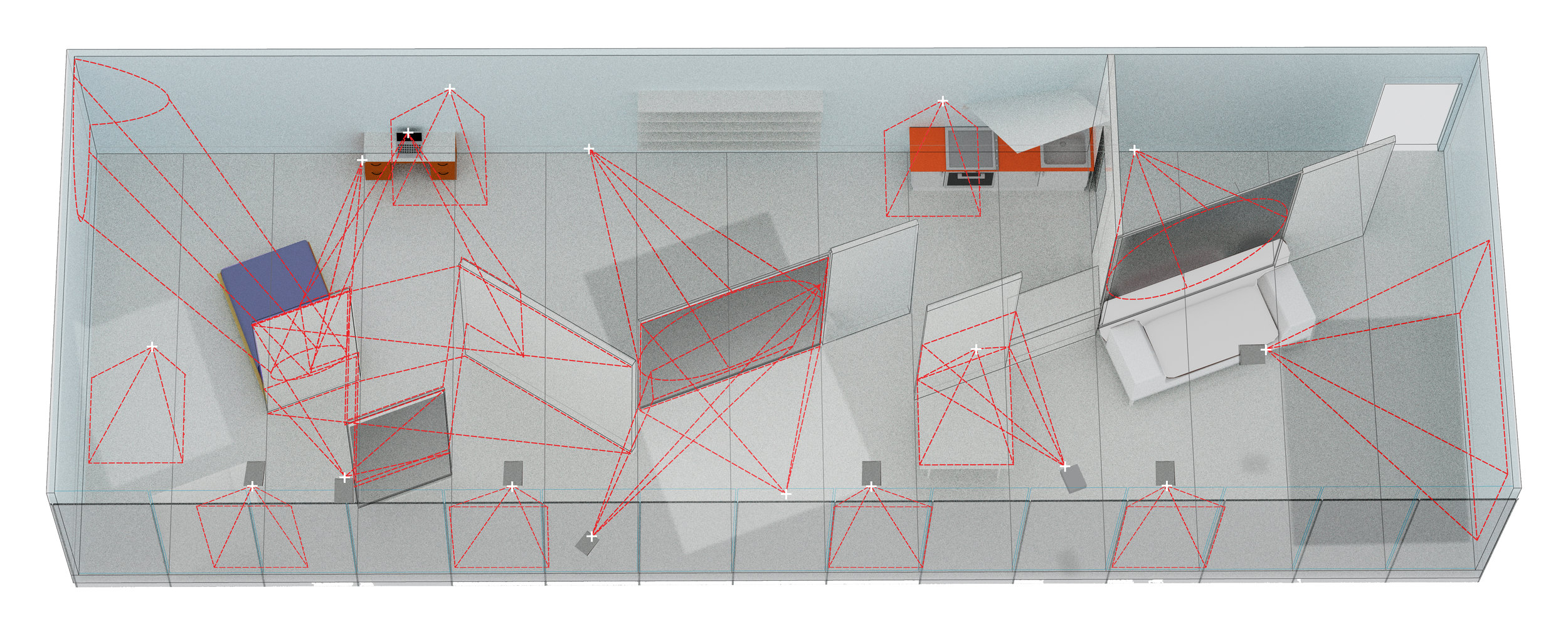Webcam House III
The Webcam House Series posits domestic spatial organizations based on the boundaries of webcams and other telecommunication devices. In the 21st century, notions of public and private are altered by the visual transmission of interiors to a global public. These projects imagine how image projection and other realtime visual technologies reorder the domestic sphere.
Fourth Wall House
Cinema and its derivative media have encoded a set of conventions in our visual language. These visual devices turn people into an AUDIENCE, prepared to engage in images constructed as an ILLUSION, all in the service of a narrative. Cinema has been able to go where architecture cannot—into incongruous spatial arrangements and temporally disjunctive sequences. Architecture can, however, serve as an armature for cinematic experiments, blurring the boundaries that separate our interior and exterior lives.
A residence, especially since the advent of visual media such as cinema, photography, television, and the internet, has become a stage for an exterior public. Beyond mere voyeurism, we are now part of a permanent audience, seeing cinema not as a parallel to the real world, but the real world as cinematic. Cinema is the baseline for our visual language, and, at times, real life confusingly parallels cinema.
In film and theater, the Fourth Wall is the imaginary surface through which an audience perceives the action. Actors perform in a space of three walls, typically ignoring the invisible fourth as the audience watches through it. A movie audience watches the implied depths of unfolding cinematic spaces flatten as a projection onto the screen surface.
Fourth-Wall House uses the devices of cinema to construct narratives steeped in everyday stories as well as fantasy and illusion, turning the mere act of peering into a neighbor’s house a cinematic experience. By using cameras and image projections (live feeds as well as broadcast and recorded images), the house introduces various media into a residential space. It uses mirrors, translucent screens, lights that cast shadows and printed imagery to assemble an illusory world, seen to the ever-present audience as both real events and fabricated realities.
WEBCAM+PROJECTOR. The projector displays live feed of webcam looking down in a plan view.
WEBCAM+PROJECTOR+SPOTLIGHT+SCRIM. While the spotlight casts shadow of private space, a webcam records and displays projection of watching neighbor.
WEBCAM+PROJECTOR+MIRROR. Projector displays webcam image beneath angled mirror.
SPOTLIGHT+WEBCAM+PROJECTOR+SCRIM. The spotlight casts shadows as webcam records and transmits live feed of shadow at oblique angle.
WEBCAM+PROJECTOR+MIRROR. The projector displays live feed from webcam. The image is split between a wall and a mirror, fragmenting the image.
Actual (no Photoshop) Webcam feed of Projections and Mirror mockup. The bookshelves are a projected image. The central figure is real, split by a mirror reflecting the shadow of another figure.
Actual (no Photoshop) image of Projector+Mirror setup.
Various permutations of Mirrors, Projectors, Webcams, Scrims and other materials.
Applied to a loft apartment, various Webcams, Projectors and Spotlights interact with Scrim, Mirrors, and Glass.
When seen from outside, the apartment elevation becomes a media wall, mixing live and recorded imagery with live tenants. The facade becomes a wide-screen narrative that viewers extrapolate from the juxtaposed images.
The narrative unfolds over time, with images and live people moving at differing rates. While the apartment televises its interior action, the mix of live and pre-recorded imagery with distorting materials obfuscates the real action within.
The overall building complex is a pair of towers with windows facing each other, providing a guaranteed audience for every performance.














